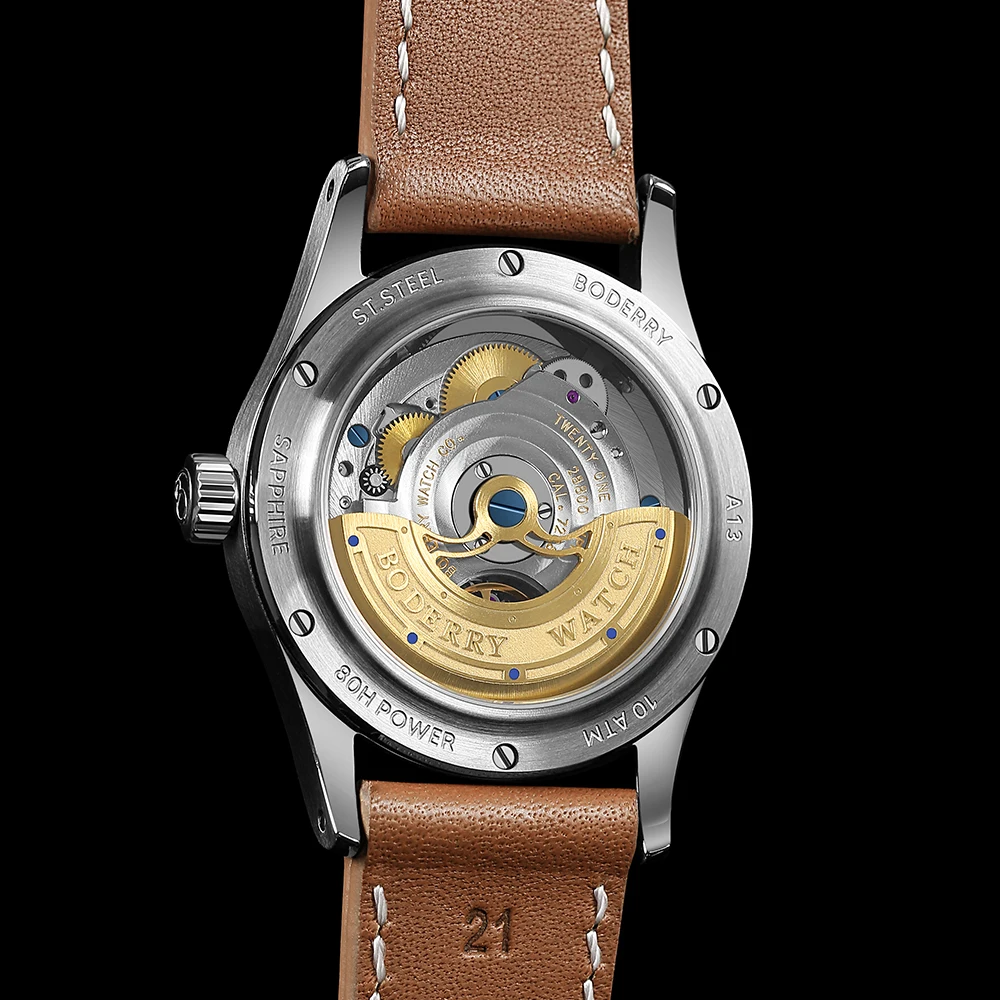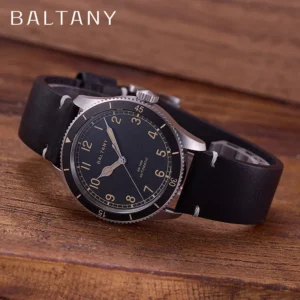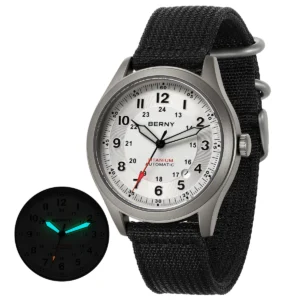Introduction: The Inseparable Bond Between Sky and Time
Throughout history, few partnerships have been as natural and necessary as that between aviation and precision timekeeping. As humans conquered the skies, a specialized tool emerged to meet the unique challenges faced by early aviators. Far from the controlled environment of land-based travel, pilots needed reliable instruments that could withstand extreme conditions while providing critical timing information.
The relationship between watchmaking and aviation runs deeper than mere aesthetics. From the earliest days of flight, pilots required timepieces that offered exceptional legibility under challenging conditions, durability against cockpit vibrations, and specialized functions for navigation and flight calculations. These demands pushed watchmakers to innovate in ways that would forever change horology.
The evolution of pilot watches and aviation history reveals a fascinating story of necessity driving innovation. Each breakthrough in flight technology created new challenges for timekeeping, resulting in watches that were not merely accessories but essential flight instruments. From simple timing tools to complex navigation computers, the journey of aviation watches mirrors the remarkable progress of human flight itself.
This journey through time shows how the cockpit’s demands transformed wristwatches from delicate pocket watch alternatives to robust, purpose-built tools that could be relied upon thousands of feet above the earth.
The Santos: First Purpose-Built Pilot’s Watch (Early 1900s)
The story of aviation watches begins with a friendship between two pioneers: Brazilian aviator Alberto Santos-Dumont and French watchmaker Louis Cartier. Santos-Dumont, celebrated for his early dirigible and aircraft designs, faced a practical problem during his flights. The pocket watches of the era required him to remove his hands from the controls to check the time – a dangerous distraction during the critical moments of flight.
In 1904, Cartier created a solution that would revolutionize both aviation and horology: a purpose-designed wristwatch that allowed Santos-Dumont to check the time while keeping his hands on the controls. This timepiece, known simply as the “Santos,” featured several innovations specifically addressing aviation needs. Its square case with exposed screws evoked the industrial aesthetic of early aircraft, while large Roman numerals and high-contrast hands ensured maximum legibility during flight.
The birth of aviation timepieces marked a significant shift in watch design philosophy. Before the Santos, wristwatches were primarily considered feminine jewelry. Cartier’s creation helped legitimize the wristwatch for men, particularly those in technical or adventurous professions.
The Santos established fundamental design principles that would influence aviation watches for decades to come: prioritizing legibility, accessibility, and durability. Its success demonstrated that watches could be both functional tools and sophisticated accessories, setting the stage for a century of innovation driven by the needs of aviators.
World War I: Military Aviation Demands Watchmaking Evolution
The outbreak of World War I transformed aviation from a daring pastime into a critical military asset, with aircraft evolving rapidly from observation platforms to combat vehicles. This new role created urgent demands for specialized pilot timepieces that could function reliably in the extreme conditions of aerial warfare.
The challenges of combat flying pushed watchmakers to develop features that would become standard in aviation timepieces:
- Luminous hands and markers coated with radium compounds allowed pilots to read their watches during night operations
- Enhanced shock resistance protected delicate movements from engine vibrations and combat maneuvers
- Oversized dials and hands improved legibility in vibrating cockpits and adverse weather
- Wire lugs and cushion cases provided greater durability for the harsh conditions of early military aviation
- Shrapnel guards (early versions of protective crystals) helped protect the watch face during combat
These innovations were born from military necessity that forged the modern field watch. Military specifications began standardizing design elements that would influence watches for decades to come. The “trench watch,” originally developed for infantry officers, evolved specifically for aviation use with larger crowns that could be operated while wearing gloves and straps long enough to fit over bulky flight jackets.
The urgency of wartime drove rapid innovation, compressing what might have been decades of gradual development into just a few years. Watchmakers learned to balance precision with practicality, creating timepieces that could withstand the rigors of combat while maintaining the accuracy necessary for military operations.
Navigation Revolution: The Lindbergh Hour Angle Watch
Charles Lindbergh’s historic 1927 solo transatlantic flight in the Spirit of St. Louis represented not just a triumph of aviation courage but also highlighted the critical navigational challenges of long-distance flight. During his 33.5-hour journey, Lindbergh relied on celestial navigation, a technique requiring precise timekeeping to determine position.
Recognizing the limitations of existing timepieces for this purpose, Lindbergh collaborated with Longines and navigation expert Philip Van Horn Weems to create a revolutionary aviation instrument: the Hour Angle watch. This specialized timepiece directly addressed the complex calculations needed for celestial navigation during transoceanic flights.
The genius of the Hour Angle lay in its integrated functionality for determining longitude. Its innovative design featured:
- A rotating bezel calibrated to convert time to angular distance
- Multiple scales for precise calculations of position
- A specialized dial configuration that displayed time in hours, minutes, and seconds simultaneously
- A center seconds hand crucial for timing celestial observations
The development of aviation timekeeping tools marked a significant evolution from simple time-telling to sophisticated navigational instruments. With this watch, pilots could more easily determine their position without complex mental calculations – a significant advantage when flying over featureless oceans.
For aviators undertaking long-distance flights, this wasn’t merely a convenience but a potentially life-saving tool that helped address one of aviation’s most persistent challenges: knowing precisely where you were when flying beyond the sight of land. Today’s automatic pilot watches continue this tradition of combining precision timekeeping with specialized aviation functions.
The B-Uhr: Definitive Military Pilot’s Watch of WWII
World War II saw aviation become a decisive military factor, with aircraft operations requiring unprecedented precision in navigation and timing. To meet these demands, the German Air Force commissioned the development of the Beobachtungsuhr (B-Uhr, or observation watch), a timepiece that would set the standard for military aviation watches for generations to come.
The B-Uhr design featured extraordinarily strict military specifications that prioritized functionality in combat conditions:
- Massive 55mm cases ensured maximum legibility in cockpit conditions
- Hacking seconds mechanisms allowed precise synchronization between crew members
- Anti-magnetic properties protected accuracy from aircraft instruments
- Oversized onion-shaped crowns could be manipulated while wearing flight gloves
- Extra-long straps accommodated wear over thick flight jackets
The B-Uhr came in two distinct dial configurations: Type A featured a simple hour track with minutes marked on the outer ring, while Type B introduced a prominent minutes track on the outer dial with hours on an inner ring – a reflection of the increasing importance of precise minute readings for navigation and timing.
Five German manufacturers – IWC, A. Lange & Söhne, Stowa, Laco, and Wempe – produced these watches to identical specifications, creating a remarkable consistency across different makers. Meanwhile, Allied forces developed their own specialized timepieces, including the American A-11 and the British “Dirty Dozen” watches, though with different design approaches reflecting their tactical philosophies.
The evolution of pilot watch design across aviation eras shows how these WWII designs established the archetypal elements of the modern pilot watch. Today’s classic pilot watches still draw heavily on these wartime designs, with their emphasis on legibility, functionality, and robustness.
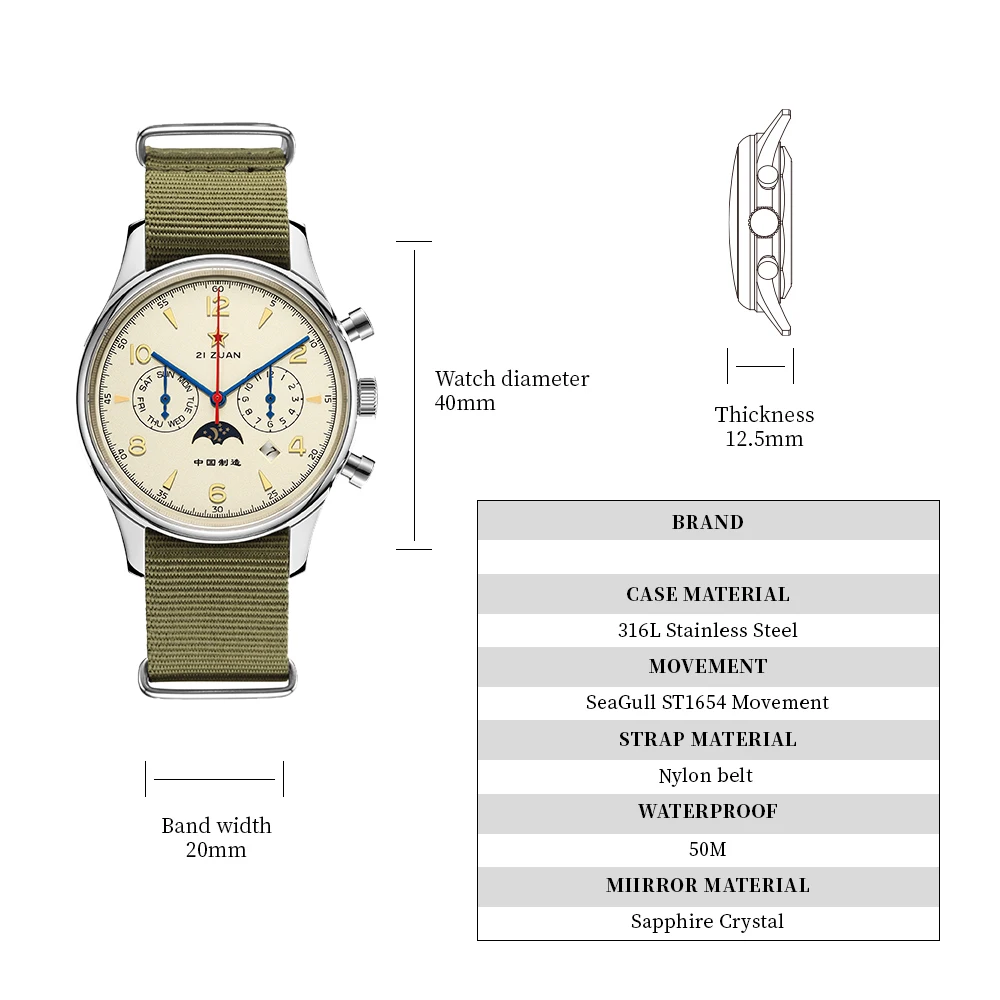
The Jet Age: GMT Functions and Multiple Time Zones
The dawn of commercial jet travel in the 1950s fundamentally transformed aviation and created entirely new challenges for pilots and their timepieces. As aircraft began routinely crossing multiple time zones at unprecedented speeds, keeping track of different local times became crucial for navigation, flight planning, and communication.
This new era of aviation demanded a horological solution, which arrived in the form of the GMT function. Developed specifically for commercial airline pilots, this complication allowed simultaneous tracking of two time zones – typically home time and Greenwich Mean Time (GMT), the aviation standard reference time.
The most notable example came through a collaboration between Rolex and Pan American Airways, resulting in the GMT-Master. This groundbreaking watch featured:
- A distinctive fourth hand making one revolution every 24 hours
- A rotating bi-color bezel marked with 24-hour graduations
- The ability to track a third time zone by rotating the bezel
- Clear color-coding (often red and blue, nicknamed “Pepsi”) to distinguish day from night hours
For pilots conducting transcontinental flights, these features of multi-timezone pilot watches proved invaluable. The GMT function eliminated the mental calculations previously required when crossing time zones and reduced the risk of confusion during critical flight operations.
The innovation proved so useful that it transcended its aviation origins to become popular among international travelers, business professionals, and watch enthusiasts. Today’s GMT pilot watches continue this tradition, maintaining the fundamental design while incorporating modern materials and movements.
The Navitimer: Wrist-Worn Flight Computer
As aircraft grew more sophisticated in the 1950s, pilots faced increasingly complex calculations for fuel consumption, distance, airspeed, and conversion factors. While dedicated slide rules existed for these purposes, they represented yet another item to manage in already crowded cockpits. Recognizing this challenge, Breitling introduced a revolutionary solution in 1952: the Navitimer.
This remarkable timepiece integrated a circular slide rule bezel with a chronograph function, effectively creating a complete flight computer that could be worn on the wrist. The Navitimer allowed pilots to perform critical calculations without additional equipment:
- Time-distance calculations based on airspeed
- Fuel consumption monitoring
- Climbing and descent rate calculations
- Conversions between different units of measurement
- Average speed determinations
The slide rule’s complexity required significant training to master, but for professional pilots, it represented a valuable tool that consolidated multiple functions into a single instrument. Its utility was so widely recognized that the Aircraft Owners and Pilots Association (AOPA) adopted it as their official timepiece, with early models bearing the AOPA wing logo on the dial.
The aviation heritage behind pilot watch features reached its functional zenith with the Navitimer. While modern digital avionics have largely replaced the need for such analog calculations, the Navitimer remains an iconic symbol of an era when pilots relied on mechanical tools to safely navigate the skies.
The Space Race: From Aircraft to Spacecraft
When human ambition extended beyond Earth’s atmosphere, timepieces designed for aviation faced their ultimate test. Space travel presented unprecedented challenges: extreme temperature fluctuations, zero gravity, high G-forces during launch and re-entry, and the absolute criticality of precise timing for orbital maneuvers.
NASA recognized that astronauts would need reliable chronographs for mission timing and began a rigorous testing program to find timepieces capable of withstanding space conditions. Their evaluation subjected watches to a punishing series of tests:
- Temperature extremes ranging from -18°C to 93°C (0°F to 200°F)
- Humidity testing at 95% relative humidity
- Oxygen atmosphere resilience
- Shock resistance equivalent to 40 G’s from six directions
- Acceleration testing
- Low and high pressure environments
- Vibration in three axes
The Omega Speedmaster ultimately survived this gauntlet to become NASA’s flight-qualified chronograph. Its robust design and mechanical reliability made it suitable for space missions, where it would play critical roles in timing engine burns and other operations. During the Apollo 13 mission, when electrical systems failed, the Speedmaster was used to time the crucial 14-second engine burn that helped guide the crippled spacecraft back to Earth.
Other space programs developed their own timing solutions, including Bulova chronographs as backup timers for American missions and the Soviet Sturmanskie watches worn by cosmonauts including Yuri Gagarin. These timepieces represented the ultimate evolution of aviation watches, proving their reliability in the most extreme environment humans had ever entered.
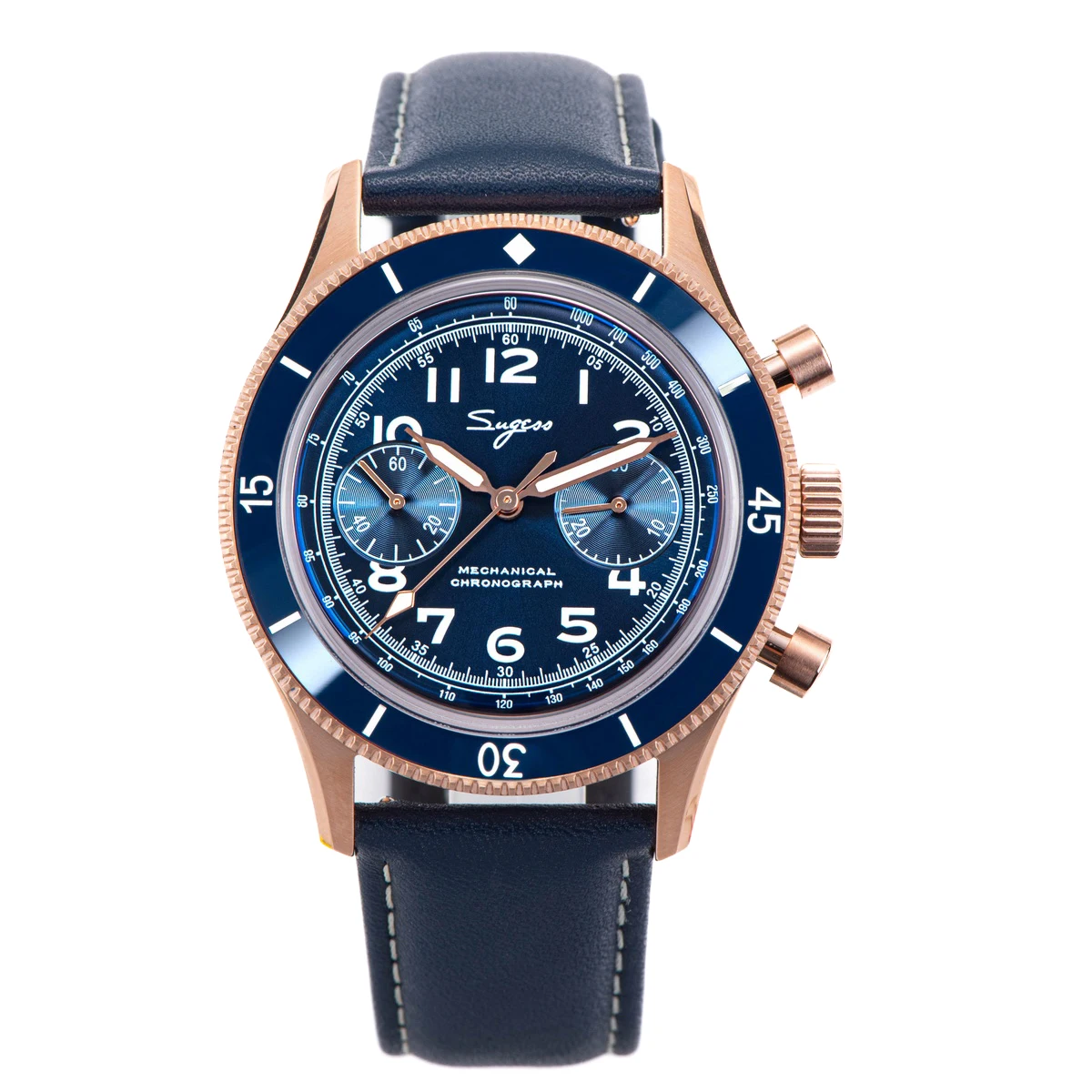
Today’s chronograph pilot watches continue this legacy of precision timing under demanding conditions, though few will ever face the extreme tests of their space-faring predecessors.
Essential Design Elements: The Pilot Watch DNA
Through decades of aviation innovation, distinctive design elements emerged to address specific cockpit challenges, eventually forming what we now recognize as the definitive “pilot watch DNA.” These characteristics represent the perfect marriage of form following function, where every design choice serves a practical purpose:
Legibility Features:
– High-contrast dials (typically black with white markings) maximize readability in varying light conditions
– Large Arabic numerals ensure quick, unambiguous time reading
– Generous application of luminous material on hands and indices permits nighttime readability
– Triangle markers at 12 o’clock provide instant orientation when glancing at the watch
Functional Elements:
– Chronograph complications enable precise timing of flight legs and fuel consumption
– Rotating bezels allow tracking of elapsed time or secondary time zones
– Slide rule scales facilitate critical in-flight calculations
– Extra-large crowns accommodate operation while wearing gloves
Durability Features:
– Robust case construction withstands cockpit vibration and potential impacts
– Anti-magnetic shielding protects movement accuracy from aircraft instruments
– Shock resistance systems safeguard delicate movement components
– Secure straps prevent loss during sudden maneuvers
Distinctive Aesthetics:
– Instrument-inspired dials echo aircraft gauges for intuitive reading
– Sword or syringe-shaped hands maximize visibility against dial background
– Oversized dimensions improve at-a-glance readability
– Tool-like appearance emphasizes functionality over decoration
These elements, born from practical cockpit needs that shaped wristwatch design, continue to define aviation timepieces today. Modern materials like titanium have allowed for the creation of titanium automatic watches that maintain the robust character of traditional pilot watches while reducing weight – a quality particularly appreciated by actual pilots.
Automatic Chronograph Watches, Chronograph Pilot Watches
Price range: $233.36 through $237.58 Select options This product has multiple variants. The options may be chosen on the product pageClassic Automatic Dress Watches, GMT Automatic Watches, GMT Pilot Watches
Price range: $1,240.86 through $1,463.33 Select options This product has multiple variants. The options may be chosen on the product pageAutomatic Chronograph Watches, Classic Style Dive Watches
$3,053.06 Select options This product has multiple variants. The options may be chosen on the product pageProfessional Spec Dive Watches, Titanium Automatic Watches
$574.74 Select options This product has multiple variants. The options may be chosen on the product pageClassic Pilot Watches, Military Inspired Automatic Watches
$561.00 Select options This product has multiple variants. The options may be chosen on the product pageClassic Field Watches, Classic Pilot Watches, Rugged Automatic Watches, Titanium Automatic Watches
Price range: $425.24 through $496.28 Select options This product has multiple variants. The options may be chosen on the product page
While many contemporary wearers will never step into a cockpit, these design elements remain appealing for their clarity, functionality, and connection to the adventurous spirit of aviation.
Iconic Aviation Timepieces and Their Lasting Legacy
Beyond the groundbreaking models already discussed, numerous other aviation timepieces have left indelible marks on watchmaking history. These iconic designs continue to influence modern watches, with their distinctive features becoming recognizable hallmarks of the genre.
The IWC Big Pilot, with its oversized dimensions and distinctive conical crown, represents the most direct modern interpretation of the WWII B-Uhr tradition. Its clean dial design and week-long power reserve make it a contemporary icon that honors its historical roots while incorporating modern watchmaking advances.
The Zenith Type 20, descended from early French military aviation watches, features exaggerated numerals and an oversized onion crown that harkens back to an era when pilots needed to operate their watches while wearing thick gloves. Its dramatic proportions and vintage aesthetic have made it a favorite among collectors who appreciate its historical authenticity.
Bell & Ross took inspiration from aircraft instrumentation, creating distinctive square cases that resemble cockpit gauges. This approach transformed aviation design codes into a completely new and recognizable watch aesthetic that continues to expand the definition of what a pilot’s watch can be.
The history of watches worn by aviation pioneers demonstrates how these timepieces have transcended their tool watch origins to become cultural symbols. What began as practical instruments have evolved into powerful statements about precision, adventure, and human achievement.
Modern automatic chronograph watches continue this tradition, incorporating heritage design elements while utilizing advanced materials and movements. Many contemporary watch enthusiasts are drawn to these pieces not for cockpit use but for their compelling blend of history, functionality, and distinctive aesthetics.
The emotional connection many feel toward aviation watches stems from their authentic purpose and the romantic notion of flight itself. Each watch tells a story of human ingenuity overcoming tremendous challenges, making them more than mere timekeepers but tangible connections to aviation’s remarkable history.
Conclusion: A History Written on the Wrist
The evolution of aviation watches represents one of horology’s most compelling stories – a narrative where life-or-death challenges consistently drove innovations that transformed watchmaking forever. From the earliest days of flight to the jet age and beyond, each advancement in aircraft technology created new demands that watchmakers rose to meet, resulting in timepieces that combined precision engineering with practical utility.
This remarkable partnership between aviation and watchmaking demonstrates how necessity can spark creativity. The need for legible dials led to design principles that now define an entire genre of watches. Navigation challenges spawned ingenious complications that expanded what a wristwatch could accomplish. The harsh conditions of flight pushed manufacturers to develop more robust cases, crystals, and movements.
What makes aviation watches particularly fascinating is how their functional elements became distinctive aesthetic traditions. Features originally designed purely for practical purposes – oversized numerals, high-contrast dials, prominent bezels – now define a recognizable style that appeals to enthusiasts worldwide, regardless of their connection to aviation.
The evolution of pilot watches from cockpit instruments to icons continues today, with modern timepieces honoring their heritage while incorporating contemporary innovations. They stand as reminders of an era when mechanical ingenuity was the foundation of flight, representing the perfect marriage of form and function that continues to captivate watch enthusiasts and aviation buffs alike.
In the world of horology, few genres can claim such a direct connection between design and purpose – a testament to when the sky’s challenges wrote their solutions directly onto the wrist.

